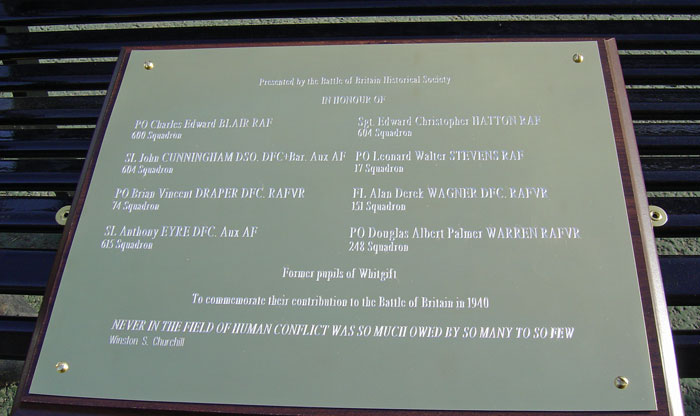The Airmen's Stories - Sgt. A D Wagner
Alan Derek Wagner, of Croydon, was born there on 10th August 1914, the son of Frederick Thomas Wagner and Marjorie Olive Wagner.
He was educated at Laleham Preparatory School, Margate and Whitgift School, Croydon.
Wagner joined the RAFVR about October 1937 as an Airman u/t Pilot. Called up on 1st September 1939, he completed his training and in May 1940 was serving with 81 (Communications) Squadron in France.
After withdrawal to England, the squadron was disbanded on 15th June 1940. Wagner may have then been posted to 3 FTS, South Cerney, as an instructor. He arrived at 6 OTU Sutton Bridge from there on 31st August. After converting to Hurricanes he joined 151 Squadron at Digby on 21st September and flew with them for the rest of the Battle period.

151 Squadron was re-equipped with Defiants for the night-fighter role in November 1940. Wagner damaged an unidentified enemy aircraft during the night of 9/10th February 1941. On the night of 8th April 1941 Wagner sighted a He111 and attacked but his gun turret jammed in the beam position. By skilful manoeuvring he enabled his gunner to shoot the enemy aircraft down and damaged another one later in the patrol.
Commissioned in May 1941, Wagner joined 30 Squadron in the Western Desert later in the year and sailed with it to Ceylon in February 1942, in HMS Indomitable. When the Japanese made their carrier-based attack on Colombo on 5th April, Wagner destroyed two of their bombers. Later in the year he returned to the UK and rejoined 151 Squadron, then at Wittering. Wagner was awarded the DFC (gazetted 5th March 1943).
In October 1943 he was posted to 605 Squadron at Bradwell Bay. He destroyed an unidentified enemy aircraft at night on 23/24th December, damaged another on 3/4th February 1944 and destroyed a Fw190, two Me410s and damaged another on 5/6th March.
One of these was attacked at such close range that Wagner's Mosquito was enveloped in burning oil and petrol, damaging the aircraft's outer skin. During the night of 24/25th April, Wagner destroyed a Ju88.
He was awarded a Bar to the DFC (gazetted 28th April 1944). In April 1944 he was posted to the Fighter Interception Unit, moving in June to a special detachment at Hawkinge flying Tempests at night against VI flying bombs.
Wagner took command on 5th July 1944 after the CO was killed. He shot down two V1s in July.
Wagner died on 18th July 1944. Pursuing a V1 flying bomb in fog, he flew into the ground near Newchurch in Tempest EJ581.
He was 29 and is buried in Folkestone New Cemetery, Hawkinge.


***********************

In 2006 a plaque was unveiled at Whitgift School, Croydon, bearing the names of the eight 'old boys' who had served in the Battle of Britain.
Wagner was already commemorated on the school's war memorial (below).

********************
In 2018 the Flying Heritage & Combat Armor Museum (FHCAM) at Everett Field, Washington, USA, modified their airworthy Mosquito to represent that flown by Wagner when serving with 605 Squadron at Bradwell Bay.

Above: Wagner (left) with his observer F/O ET Orringe and (below) the Mosquito in 2018.

|